Reasons and Indications for use:
Hernia mesh is a sterile, knitted material made from a synthetic polymer such as polypropylene. The mesh can be in the form of a patch or plug that is used to repair a weakness or whole in the patients abdominal wall.
Inguinal hernia: An inguinal hernia is a tear or weak spot in the patient’s lower abdominal wall near the groin region allowing fat or organs to push through. The mesh used to support the weakness or tear until the patient’s tissue can heal properly. This type of hernia typically occurs in an older man and is caused by a weakening of the abdominal walls floor.
Some Symptoms Include:
-
Weakness, pressure, burning, or pain in the abdomen, groin, or scrotum.
-
A bulge or lump in the abdomen, groin, or scrotum that is easier to see when you cough and disappears when you lie down.
-
Pain when straining, lifting, or coughing.
- The feeling that something has ruptured
.
Interesting Facts:
- About 25% of males and 2% of females develop inguinal hernias
- Approximately 75% of all hernias occur in the groin; two thirds of these hernias are indirect and one third direct
- Indirect inguinal hernias are the most common hernias in both men and women; a right-sided predominance exists
- Incisional and ventral hernias account for 10% of all hernias
- Only 3% of hernias are femoral hernias
- Between 10% and 30% of children have an abdominal wall hernia; most hernias of this type close spontaneously by age 1 year.
- The incidence of incarcerated or strangulated hernias in children is 10-20%; 50% of these occur in infants younger than 6 months
Typical Patient:
Sex: 90% of all inguinal hernias occur in males
Age: Indirect hernias usually present during the first year of life, but they may not appear until middle or old age.
Different Treatments and Therapies:
For there to be successful treatment of hernias, it is required to have closure of the tissue with adequate reinforcement. If there is tissue available, the tissue can be sutured around the defected wall. The problems with this method are the likelihood of complications such as tissue dehiscence, increased intraabdominal pressure and possibly a higher rate of wound infection. Consequently in such cases, a prosthetic material is required to bridge the wall defect and reinforce the surrounding tissue.
PROLENE™ Polypropylene -Hernia System
PROLENE™ Inserted inside the body
ULTRAPRO™ Partially Absorbable lightweight mesh
Sterilization Techniques:
If the hernia mesh consists of PET and PTFE materials, either Gamma radiation or steam should be used to sterilize the product. Gamma radiation and steam should be used with PET and PTFE materials, because these materials will not lose their strength after 10 Mrads. In Gamma radiation, the product is completely penetrated by the radiation, this process is safe for the environment, and it is fast. Steam sterilization is a fast and cheap process. Other hernia mesh materials such as PP, PGA, and PGL should be sterilized by ethylene oxide. This process is carried out in the shipping packaging and there are a variety of materials possible.
Gamma Sterilization
When items undergo gamma sterilization they are exposed to extremely high amounts of radiation. The item that is being sterilized travels on a conveyor pallet and is introduced to an isotope in a protective pathway. The gamma rays that are introduced to the object kill all bacteria and microorganisms.
Advantages
- Very few parameters vary in the product
- Very reliable Process
- Complete Product Penetration
- Immediate Product Release
- Proven over 30 years
- No Residue
- Environmentally Safe
- Economical
Disadvantages
- Some plastics degrade
- Discoloration of some products
- Can cause some materials to become brittle
- Limited material selection
- Isotope emits high radiation that can escape
Electron Beam
Electron beam sterilization is done by focusing a high-energy beam of accelerated electrons at a target located above the conveyor belt holding the items to be sanitized.
Advantages
- All processing takes place in a single line with no outside processing steps needed
- Rapid dose rate
- No toxic waste or by-products
Disadvantages
- Limited Product Penetration
- Product heating
- Equipment maintenance and reliability
Autoclave Sterilization
During the autoclave process items are placed inside a pressure vessel that introduces the product to 130 C. The high-pressure stream is left in the vessel for a long enough time to completely sterilize the package inside. After all of the harmful organisms have been killed, the high-pressure steam is evacuated from the vessel and a sterile product remains.
Advantages
- Cheap
- Easy to control
- Easy to monitor
Disadvantages
- The process may contain contaminants
- Distortion (at 130 C)
- Packing Warping
- Vacuum Pressure
- Moisture Absorption
Ethylene Oxide (ETO) Sterilization
The process of ethylene oxide sterilization consists of the product being left to soak in a corrosive gas. After soaking in the corrosive gas the product is extracted and completely sterile. This sterilization method is done in batches taking around 4-5 hours a piece and is often repeated several times. This causes the sterilization to be a timely process.
Advantages
- Variety of Materials possible
- Ease of packaging and shipping
- Low Design Expense
Disadvantages
- Packaging used must be permeable
- Aeration must occur
- If aeration doesn’t occur the product may not become fully sterile
- Toxic chemicals
- Small traces of ETO on the product after processing
- Takes one to two weeks
- The vacuum, pressure, temperature, time, humidity, and ETO concentration can effect how sterile the product becomes
Surface Modifications
Surface Modifications
- Plasma Deposition Process
- Plasma Etching Treatment
- Radiation Grafting
Inguinal Hernia Repair Surgery:
Protocol for Implementation:
The patient will receive a general anesthesia or a spinal anesthesia to perform the surgery. A local anesthesia can be used on a small hernia. The procedure for the implantation of hernia mesh is referred to as a tension-free repair. In this method the surgeon places a flat, synthetic knitted mesh over the hernia and stitches it into the surrounding tissue. The sutures used are often absorbable but degrade slowly enough to allow enough time for the patient’s tissue to grow around the mesh structure.
Tension Repair:
- Was the only form of hernia repair in the past
- Surgeon makes an incision above hernia and stuffs the protruding internal abdomen wall back into the correct position.
- Sutures are used to close the remaining incision
Tension-Free Repair:
- The most commonly used method of hernia repair used today.
- A flat, synthetic woven mesh is placed over the hernia and stitched into the surrounding tissue.
- The tissue grows into the mesh and supports the weakness or hole.
- There is also Three-dimensional hernia mesh that allows less material in the patient’s body while still exhibiting proper strength.
Laparoscopic Tension-Free Repair:
- This form of Hernia Repair is used for patients who have had multiple abdominal surgeries, cannot tolerate general anesthesia, or are obese.
- The surgeon makes 3-4 small incisions to insert a laparoscopic camera into the patient to perform the surgery.
FDA Regulations:
Hundreds of thousands of hernia repair operations are performed each year with and without surgical mesh, and the patients generally recover quickly and do well after surgery.
However, FDA has received reports of complications associated with the mesh. The complications include adverse reactions to the mesh, adhesions (when the loops of the intestines adhere to each other or the mesh), and injuries to nearby organs, nerves or blood vessels . Other complications of hernia repair can occur with or without the mesh, including infection, chronic pain and hernia recurrence.
Most of the complications reported to us so far have been associated with mesh products that have been recalled and are no longer on the market.
Pros and Cons of Harnia Repair Mesh:
Woven Fabric Performance Advantages/Disadvantages
| Woven Fabric Performance Advantages/Disadvantages |
Advantages |
Disadvantages |
| Porosity | – Pore size can be manufactured- Pore size is consistent throughout the fabric | – Pore size dependent on fiber diameter- Pore size dependent on tightness of woven fabric. |
| Tensile Strength | – High Tensile Strength with minimal stretch- More Dimensionally Stable | – The high tensile strength causes the fabric to have a low elongation at break. |
| Elongation at Break | – High Dimensional Stability- Elongation at Break is consistent in all directions | – Low Elongation at Break- No Stretch in the warp direction and little in the weft direction |
| Flexibility/Bending Modulus | – Heat-set woven fabrics will not wrinkle easily | – Stiffer and less flexible- More difficult to handle and suture- Wrinkles |
| Stability of Cut Edges | – Strong selvage keeps fabric edges from fraying | – Cut edges fray |
| Thickness | Prefer a thin fabric | – Hard to produce lightweight structure |
Knitted Fabric Performance Advantages/Disadvantages
| Knitted Fabric Performance Advantages/Disadvantages |
Advantages |
Disadvantages |
| Porosity | – Higher Permeability than woven structure | – Low Barrier Properties |
| Tensile Strength | – Warp knit is stronger than a weft knit | – Dimensionally unstable |
| Elongation at Break | – Stretches significantly along the weft direction- Slight stretch in the weft direction | – Low dimensional Stability- Elongates longer in warp or weft direction depending on stitch |
| Flexibility/Bending Modulus | – Softer and more flexible than woven fabrics- Easily conformable- Easy to suture- No Wrinkles | – Tuck stitches make the fabric less flexible |
| Stability of Cut Edges | – Warp knit won’t Fray or Ravel | – Edges Curl on weft knit |
| Thickness | – Knit fabrics with tuck stitches are thicker because of overlapping fabrics | – Hard to produce thin/lightweight structure- Tuck Stitches cause fabric to be thick |
Braided Fabric Performance Advantages/Disadvantages
|
Braided Fabric Performance Advantages/Disadvantages |
Advantages |
Disadvantages |
| Porosity | – Pore size can be adjusted by using different fiber diameters to compose the braid | – Low Surface Area which means there is a small amount of cover |
| Tensile Strength | – High Longitudinal Tensile Strength | – Strength is mainly in longitudinal direction |
| Elongation at Break | N/A | – Low Elongation at Break |
| Flexibility/Bending Modulus | – Can be engineered to maintain a structural composition without sacrificing flexibility | – Can be unstable when subject to torsional loads |
| Stability of Cut Edges | N/A | – Challenging to secure the yarns at both ends of the device |
| Thickness |
Nonwoven Fabric Performance Advantages/Disadvantages
|
Nonwoven Fabric Performance Advantages/Disadvantages |
Advantages |
Disadvantages |
|
Porosity |
– Size and distribution can be controlled by changing variables such as density of fibers, fiber diameter and length, orientation of the web, and method of bonding – High Surface Area – Encourages tissue growth with large pores |
– Inconsistent Pore size throughout fabric due to non-uniformity |
|
Tensile Strength |
– Needlepunching the fabric will improve tensile strength |
– Lower tensile strength then other processing methods |
|
Elongation at Break |
– High dimensional stability in all directions – Low Levels of Shrinkage |
– Low levels of stretch |
|
Flexibility/Bending Modulus |
– Softer and more flexible than woven fabrics – Doesn’t Wrinkle |
– Needlepunched fabrics much less flexible |
|
Stability of Cut Edges |
– Edges stay flat – Wont Ravel |
– Doesn’t have strong selvage edges |
|
Thickness |
– Can produce very thick/lightweight fabrics |
– The lightweight fabric produced causes the low tensile strength |
Business Strategy for W.L Gore (GoreTex) “ Gore Bio-A Hernia Plug:” (alternative to a permanient plug)
- Combines an absorbable plug with a nonabsorbable patch
- Indicated for the reinforcement of soft tissue in the groin, abdominal and umbilical regions. The GORE® BIO-A®Hernia Plug serves as a scaffold to facilitate tissue regeneration and is gradually absorbed by the body and replaced by native tissue.
- Repairs hernia defects by promoting a well-organized tissue response, while markedly reducing chronic complications associated with permanent implants.
- This Plug is a porous fibrous structure composed of synthetic copolymer that is bioabsorbed in approximately six months. It is both biocompatible and nonantigenic
- Gore is the exclusive manufacturer and distributor for the Bio-A- Hernia Plug
References:
http://moodle.wolfware.ncsu.edu/file.php/33423/Readings/king_herniaprostheses.pdf
http://www.herniasolutions.com/mesh-hernia-repair/inguinal-hernia-products
http://www.drmatthewlublin.com/hernia-surgery/inguinal-groin-hernia-repair/
http://www.herniasolutions.com/mesh-hernia-repair/inguinal-hernia-products
http://www.bupa.co.uk/individuals/health-information/directory/a/abdominal-hernia-repair
http://www.goremedical.com/herniaplug/
http://www.oakleafmedical.com/hv/2006_aut/aut2006_repairgroin.htm
[FINAL VERSION]

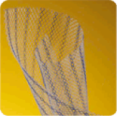
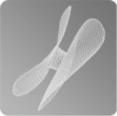

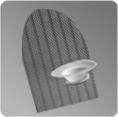
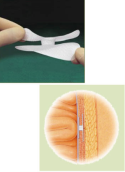
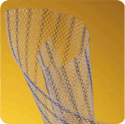
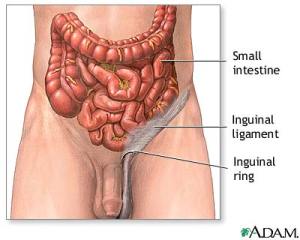
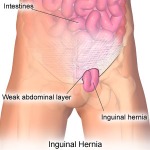

– It would be nice to see some pictures showing the normal and pathological human anatomy
– Nice like the way you added some “interesting facts”
– Cite your pictures
– Don’t forget to identify any surface modifications
– Do you have any suggestions on how to improve the design?
-I feel like you should start off with what a Hernia Repair Mesh is and then go into your reasons for use, or just some way of letting us know what it is.
-I like the chart describing the advantages and disadvantages of the different types of hernia meshes.
-Maybe a few more pictures would help explain where hernia meshes are implanted.
-I think you should have footnote citations throughout your text.
-It looks like some of your sections for Advantages/Disadvantages are bold while others are not.
-The size of your images should be adjusted.
– Great background on the symptoms indications for use and therapies.
– The “Interesting Facts” section is unique and very intriguing to readers.
– The formatting of your “Pros and Cons” table is hard to follow, try to decrease the size of the table in order to make it more visually appealing.
– Your visual aids are very helpful, maybe add some more pictures of implanted hernia mesh.
– Overall, nice job with your page!
Comments from Martin W. King and Greg Tourino (Course Instructors):
This page looks good, and they have included a large amount of content and their use of a table is effective. However the group should have paid more attention to detail as there are several issues affecting the pages flow and readability. First are issues with consistency in the content with some of the bullet lists being centered and others left justified. Second the images should have been described ex Fig 1, Fig 2 and cited, there is no information for the first image at the top of the page and the URLs attached to some of the images below are not an appropriate form of description or citation. Third there should be more consistency with the headings ex should be all the same color and in bold font and finally the references could be more detailed.
You have included a lot of information here covering details of the pros and cons of different sterilization methods, and the advantages and disadvantages of selecting a woven, knitted, braided and nonwoven structure. This is most informative, but becomes a little overwhelming due to the number of tables and whether or not these issues are really relevant for commercial hernia repair meshes. For example, do you need to refer “braided” & “nonwoven” structures when they are not used commercially? Also is “Surface Modification” really necessary, when there are no details of how this impacts the biological performance? I disagree that gamma radiation is “environmentally safe”, when one has to dispose of a radioactive cobalt source somewhere sometime. Why include “Electron beam” sterilization method, when it is not recommended for any hernia mesh materials. Please change the wording of “Tension-Free Repair” to read: “A flat synthetic knitted or woven mesh is placed…” Spelling mistakes need to be corrected, e.g. 3rd line “hole”, not “whole”!!